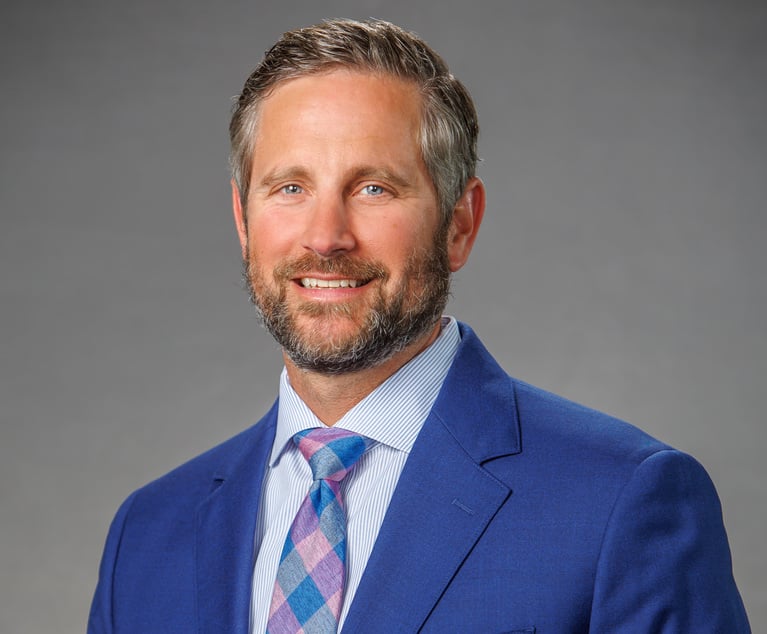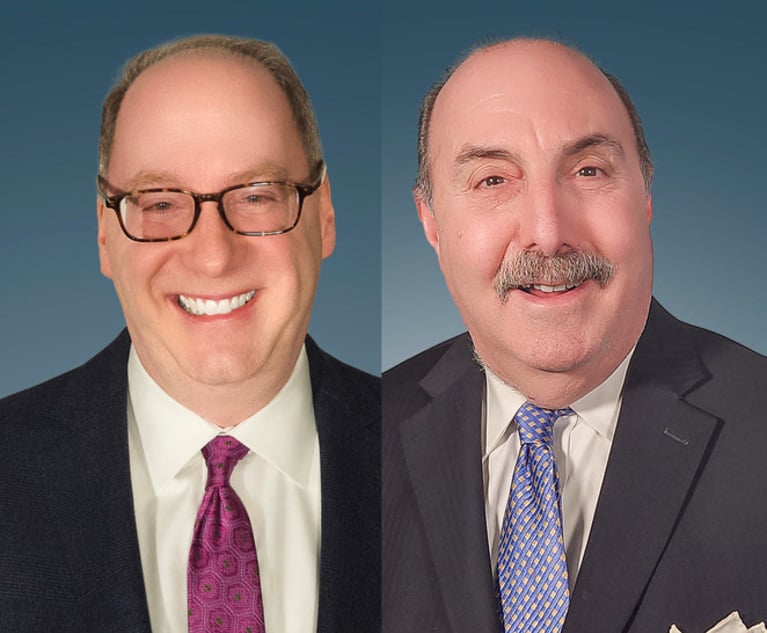New EB-5 Regulations Are in Effect. Now What?
On Nov. 21, the new EB-5 regulations went into effect, ushering in long-anticipated changes to the immigrant investor program.
December 18, 2019 at 01:14 PM
6 minute read
 Vicki Li of Klasko Immigration Law Partners
Vicki Li of Klasko Immigration Law PartnersOn Nov. 21, the new EB-5 regulations went into effect, ushering in long-anticipated changes to the immigrant investor program. The EB-5 immigrant investor visa program, created in 1990 by the Immigration Act of 1990, provides a method for eligible immigrant investors to become lawful permanent residents by investing at least $500,000 to finance a business in the United States that will employ at least 10 American workers. The most notable change to the program for potential immigrant investors is the minimum investment amounts. The standard minimum investment amount has increased from $1 million to $1.8 million, and investments in a targeted employment area (TEA) have increased from $500,000 to $900,000. While this seems like a drastic increase, the minimum investment amounts have remained the same for the past three decades, since the inception of the EB-5 program in 1990. Therefore, the increase represents an adjustment for inflation, reflecting the present-day value of the investment amounts established by Congress in 1990. However, the long-term effects on the program and the U.S. economy remain to be seen. Regardless of the rationale, the increase will most likely shrink the pool of prospective investors who have the means to make such an investment.
TEA designation is another change under the new regulations. A TEA is a rural area or an area with a high unemployment rate, which is defined as at least 150% of the national average rate. The new regulations eliminate the ability of a state to determine what qualifies as a TEA and instead TEAs will be designated by the U.S. Department of Homeland Security (DHS) after the investment is made. In addition, specifically designated high-unemployment TEAs will now consist of a combination of census tracts that include the tract or contiguous tracts in which the new commercial enterprise is principally doing business, including any or all directly adjacent tracts. Further, provided that they have experienced an average unemployment rate of at least 150% of the national average unemployment rate, TEAs may now include cities and towns with populations of 20,000 or more outside of metropolitan statistical areas. These changes may cause some investments and projects to no longer qualify as being in a TEA, especially those in big cities, and will likely cause more delays in adjudication if DHS is tasked with determining TEA designations for all projects.
Under the new regulations, certain EB-5 petitioners will be able to retain the priority date of an approved EB-5 immigration petition for use in connection with any subsequent EB-5 immigrant petition. An EB-5 immigrant petition's priority date is normally the date on which the petition was properly filed. A petitioner can retain the priority date from an approved I-526 immigrant petition unless the prior approval was revoked based on the petitioner's fraud or willful misrepresentation, a material error, or the petitioner has already been admitted to the United States as a conditional permanent resident. For example, if a petitioner needs to file a new petition due to circumstances beyond his control (for instance, a terminated regional center associated with the original petition), the petitioner will be able to retain the old priority date. However, if a petitioner has entered the United States as a conditional permanent resident based on a previously approved EB-5 petition and circumstances beyond his control make it such that the petitioner is unable to remove the conditions on resident status, the petitioner must file a new EB-5 petition with a new priority date if he wishes to continue to seek permanent residency.
The new regulations also clarify the ability of derivatives to remove conditions on their permanent residence. Previously, derivative family members could either be included in a petition to remove conditions filed by the principal investor or added at a later date. However, if the principal investor failed or refused to file a petition to remove conditions, the derivatives would not be eligible to remove the conditions on their permanent residence. Under the new regulations, derivative family members must file their own petitions to remove conditions on their permanent residence if they are not included in the principal investor's petition. However, if the principal investor fails or refuses to file a petition to remove conditions, each derivative family member may file their own petition. In addition, interview locations are more flexible under the new regulations. They can be scheduled at the U.S. Citizenship and Immigration Services (USCIS) office having jurisdiction over either the immigrant investor's commercial enterprise or residence, or the location where the petition to remove conditions is being adjudicated, thus reducing burdens of the immigrant investors.
Prior to the new regulations, the EB-5 program had been losing its luster with many prospective investors due to the extensive wait times as a result of the visa backlog. For China mainland-born investors, the wait for an EB-5 visa is currently more than 15 years, and for India-born investors, more than eight years. Unfortunately, the new regulations do not implement any means to reduce the current visa backlog. Due to the backlog, it is not surprising that nationals from China and India have been seeking alternative options that would allow them to live and work in the United States. One such option is the E-2 visa, which is available to nationals of countries with which the United States maintains a treaty of commerce and navigation. There are several advantages to the E-2 visa, including no limitations to the number of E-2 visas that can be issued, no set minimum level of investment required, and qualified investors are granted an initial stay of two years, which can be extended in increments of up to two years each, and there is no limit to the number of extensions that may be granted. We will likely continue to see this trend, especially with the increase in the investment amounts.
As discussed, certain changes to the EB-5 industry can be anticipated as a result of the new regulations. However, at this point, it is impossible to predict the long-term impact it would have on the U.S. economy.
Vicki Li is a staff attorney in Klasko Immigration Law Partners' Philadelphia office and a member of the firm's EB-5 practice. As a member of the EB-5 team, Li is mostly involved in the preparation and filing of I-526 petitions, for both regional center investors and individual investment opportunities.
This content has been archived. It is available through our partners, LexisNexis® and Bloomberg Law.
To view this content, please continue to their sites.
Not a Lexis Subscriber?
Subscribe Now
Not a Bloomberg Law Subscriber?
Subscribe Now
NOT FOR REPRINT
© 2025 ALM Global, LLC, All Rights Reserved. Request academic re-use from www.copyright.com. All other uses, submit a request to [email protected]. For more information visit Asset & Logo Licensing.
You Might Like
View All

Products Liability: The Absence of Other Similar Claims—a Defense or a Misleading Effort to Sway a Jury?


K&L Gates Sheds Space, but Will Stay in Flagship Pittsburgh Office After Lease Renewal
Trending Stories
- 1'It's Not Going to Be Pretty': PayPal, Capital One Face Novel Class Actions Over 'Poaching' Commissions Owed Influencers
- 211th Circuit Rejects Trump's Emergency Request as DOJ Prepares to Release Special Counsel's Final Report
- 3Supreme Court Takes Up Challenge to ACA Task Force
- 4'Tragedy of Unspeakable Proportions:' Could Edison, DWP, Face Lawsuits Over LA Wildfires?
- 5Meta Pulls Plug on DEI Programs
Who Got The Work
Michael G. Bongiorno, Andrew Scott Dulberg and Elizabeth E. Driscoll from Wilmer Cutler Pickering Hale and Dorr have stepped in to represent Symbotic Inc., an A.I.-enabled technology platform that focuses on increasing supply chain efficiency, and other defendants in a pending shareholder derivative lawsuit. The case, filed Oct. 2 in Massachusetts District Court by the Brown Law Firm on behalf of Stephen Austen, accuses certain officers and directors of misleading investors in regard to Symbotic's potential for margin growth by failing to disclose that the company was not equipped to timely deploy its systems or manage expenses through project delays. The case, assigned to U.S. District Judge Nathaniel M. Gorton, is 1:24-cv-12522, Austen v. Cohen et al.
Who Got The Work
Edmund Polubinski and Marie Killmond of Davis Polk & Wardwell have entered appearances for data platform software development company MongoDB and other defendants in a pending shareholder derivative lawsuit. The action, filed Oct. 7 in New York Southern District Court by the Brown Law Firm, accuses the company's directors and/or officers of falsely expressing confidence in the company’s restructuring of its sales incentive plan and downplaying the severity of decreases in its upfront commitments. The case is 1:24-cv-07594, Roy v. Ittycheria et al.
Who Got The Work
Amy O. Bruchs and Kurt F. Ellison of Michael Best & Friedrich have entered appearances for Epic Systems Corp. in a pending employment discrimination lawsuit. The suit was filed Sept. 7 in Wisconsin Western District Court by Levine Eisberner LLC and Siri & Glimstad on behalf of a project manager who claims that he was wrongfully terminated after applying for a religious exemption to the defendant's COVID-19 vaccine mandate. The case, assigned to U.S. Magistrate Judge Anita Marie Boor, is 3:24-cv-00630, Secker, Nathan v. Epic Systems Corporation.
Who Got The Work
David X. Sullivan, Thomas J. Finn and Gregory A. Hall from McCarter & English have entered appearances for Sunrun Installation Services in a pending civil rights lawsuit. The complaint was filed Sept. 4 in Connecticut District Court by attorney Robert M. Berke on behalf of former employee George Edward Steins, who was arrested and charged with employing an unregistered home improvement salesperson. The complaint alleges that had Sunrun informed the Connecticut Department of Consumer Protection that the plaintiff's employment had ended in 2017 and that he no longer held Sunrun's home improvement contractor license, he would not have been hit with charges, which were dismissed in May 2024. The case, assigned to U.S. District Judge Jeffrey A. Meyer, is 3:24-cv-01423, Steins v. Sunrun, Inc. et al.
Who Got The Work
Greenberg Traurig shareholder Joshua L. Raskin has entered an appearance for boohoo.com UK Ltd. in a pending patent infringement lawsuit. The suit, filed Sept. 3 in Texas Eastern District Court by Rozier Hardt McDonough on behalf of Alto Dynamics, asserts five patents related to an online shopping platform. The case, assigned to U.S. District Judge Rodney Gilstrap, is 2:24-cv-00719, Alto Dynamics, LLC v. boohoo.com UK Limited.
Featured Firms
Law Offices of Gary Martin Hays & Associates, P.C.
(470) 294-1674
Law Offices of Mark E. Salomone
(857) 444-6468
Smith & Hassler
(713) 739-1250





